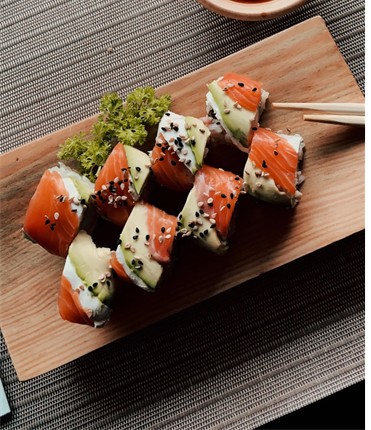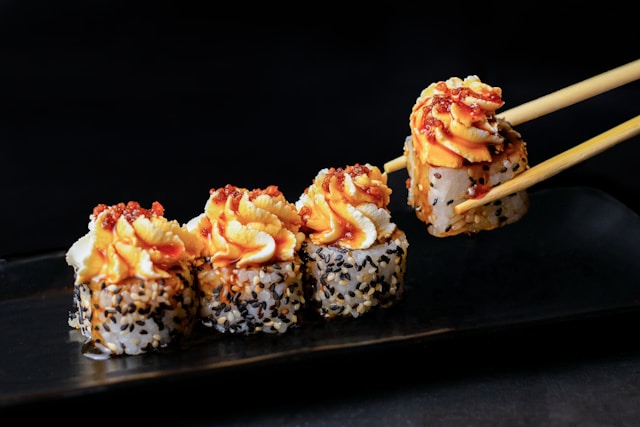
When it comes to making sushi rolls that are both visually stunning and bursting with flavor, each ingredient matters - from the freshness of the fish to the crunch of the vegetables, the quality of the nori seaweed sheets, and the precision of each cut. Yet, at the heart of it all is one crucial component: the rice. Sushi rice, or shari, serves as the backbone of every roll, providing structure and a delicate balance of taste and texture. Without expertly prepared rice, even the most premium ingredients can’t shine. True sushi craftsmanship begins with mastering the preparation, seasoning, and handling of sushi rice.
Sushi rice isn’t just ordinary rice used as a base. It is a very specific type of short-grain or medium-grain rice known for its unique texture and high starch content. These characteristics allow the rice to become sticky when cooked, which is vital for shaping sushi rolls and nigiri. The stickiness provides the structural integrity required to bind fillings and maintain form without the need for excess adhesives or binding agents. Choosing the right variety - often Japanese rice varieties like Koshihikari or Tamanishiki - is the first step in the pursuit of perfect sushi.
What truly transforms plain cooked rice into sushi rice, however, is the seasoning. This process involves the careful mixing of rice vinegar, sugar, and salt. The exact ratio may vary depending on personal taste or regional tradition, but the goal is to achieve a balance that enhances the flavor of the rice without overpowering the other ingredients in the roll. This mixture gives sushi rice its signature sweet-tangy flavor and glossy finish, while also playing a role in preserving the rice and maintaining its texture. The vinegar also has mild antibacterial properties, which historically made it a smart choice for food safety, particularly when dealing with raw fish.
Preparation is where much of the magic happens. Sushi rice must be rinsed thoroughly before cooking to remove excess surface starch. This process is more than a quick rinse; it often requires several washes until the water runs nearly clear. Removing this starch is crucial to prevent the rice from becoming overly gummy or clumping together in unpleasant ways. Once rinsed, the rice should soak for a period of time - generally 20 to 30 minutes - before being cooked, allowing the grains to absorb moisture evenly for a consistent texture.
The cooking method is equally important. While a rice cooker provides the easiest and most consistent results, traditionalists may still prefer the stovetop method, which requires careful attention to water ratios, heat levels, and timing. Once the rice is cooked, it should be allowed to steam with the lid on for a few minutes to finish the cooking process without drying out. It is during this final steaming that the rice achieves its full plumpness and shine.
The vinegar mixture should be warmed gently before being incorporated into the rice. Using a wide, flat-bottomed wooden bowl called a hangiri is ideal, though any non-reactive surface will do. The rice should be turned out into the vessel and gently sliced through with a wooden paddle, rather than stirred, to avoid crushing the grains. As the vinegar mixture is added, it should be folded into the rice with gentle motions that cool and aerate the rice simultaneously. A fan may be used during this step to help achieve the glossy finish sushi rice is known for. This cooling process also stabilizes the texture and helps prevent sogginess when the rice is used in rolls.
Temperature is another often overlooked factor. Sushi rice should be slightly warm, close to body temperature, when used. If it is too hot, it may cause the seaweed to become soggy or melt the delicate fats in sashimi. If it is too cold, it becomes firm and difficult to mold, losing the tender mouthfeel that great sushi is known for. Keeping rice at the right temperature involves covering it with a clean, damp cloth until ready for use and preparing only the amount needed for the session at hand.

Understanding sushi rice is also about appreciating the cultural respect with which it is treated. In Japan, sushi chefs spend years learning to master rice before moving on to other components like fish preparation. The rice is not just a backdrop to the other ingredients—it is a centerpiece. A great sushi roll should showcase the harmony between the rice and its counterparts, with the rice providing a subtle, flavorful canvas that enhances rather than dominates the dish.
Modern fusion sushi rolls have introduced a wide array of fillings, sauces, and presentations, but the importance of rice remains the same. Whether preparing a simple tuna roll or an elaborate dragon roll topped with eel and avocado, the quality of the rice will either elevate or hinder the final result. Even in vegetarian or vegan sushi, where the absence of fish might seem to shift attention elsewhere, the rice continues to play a central role in texture, structure, and taste.
Store-bought or pre-made sushi often fails to capture this element, with rice that is either too dry, too soggy, or overly vinegared. This is one reason why sushi made at home, or from trusted chefs, tends to be more satisfying. When rice is prepared fresh and handled with intention, each bite of sushi becomes a more complete experience.
Additionally, the role of sushi rice extends beyond rolls and nigiri. It’s used in dishes like chirashi (scattered sushi), where seasoned rice forms a base for a colorful arrangement of toppings. It’s essential for hand rolls, or temaki, and even appears in sushi burritos and poke bowls in modified forms. In each of these, the quality and preparation of the rice remain a critical factor in how enjoyable and authentic the final dish feels.
Creating perfect sushi is a blend of science, tradition, and artistry. And at the heart of it all lies the sushi rice - a seemingly simple ingredient that requires care, attention, and respect. By investing time in selecting the right type of rice, learning the proper rinsing and cooking techniques, and mastering the seasoning and handling process, anyone can elevate their sushi-making from ordinary to exceptional. It is in these details that the essence of sushi lives.
While toppings and fillings may come and go with culinary trends, the role of sushi rice as the essential ingredient remains unchanged. Those who take the time to understand and perfect this foundation will find not only better results on their plate but a deeper appreciation for the cultural richness and craft that define sushi itself.